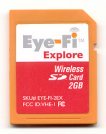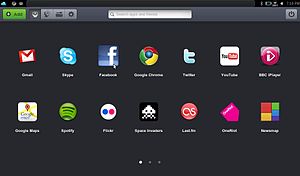
LotSmarter
As auctioneers slowly come around to the concept that consumers want items, not auctions, they invariably struggle with the intricacies involved with listing their items in their auctions. There are many places where the same inventory needs to be listed, ranging from advertising venues like Internet auction calendars to software packages for clerking and cashiering to web apps for Internet bidding, each with its own specification for importing inventory.
The tried-and-true gold standard for inventory entry is the spreadsheet. It’s almost synonymous with inventory management, with many auctioneers using the word Excel generically to mean “that program that we use to generate our auction catalogs.”
Spreadsheets may work fine for one destination, but the different specifications for each listing destination mean that each different upload requires reformatting the column order – and sometimes the contents of the columns. For example, one listing may support HTML in the description field, while another may choke on markup.
Spreadsheets have other problems. Traditional software applications like Microsoft Excel or LibreOffice Calc allow only one user to edit a spreadsheet at a time. While some newer web apps like Google Spreadsheets allow multiple users to make changes simultaneously to the same file, it’s still a hassle to configure a spreadsheet for data validation – only allowing a small selection of valid seller numbers in the seller column, for example.
Many auction software packages have an included inventory management system, but these systems are usually very specifically tailored to the features of the software package. Excellent data quality in the auction software doesn’t translate to feature-complete exports for the many different Internet bidding providers or auction calendars.
Lotting Solutions is the company that recently released version 1 of LotSmarter, software that aims to be an inventory management system that lets auctioneers list inventory faster than ever before and port that inventory to every possible destination.
LotSmarter is stand-alone software that installs on Windows XP or Windows 7. On installation, the user selects from a list of exports those that will be used. These selected exports actually dictate the fields that will be available on each item. For example, an auctioneer can select Maxanet for Internet bidding, Auction Flex for clerking and cashiering. LotSmarter adjusts the data capture fields to include those used by Maxanet and Auction Flex and leaves out those required by the other options that aren’t selected.

Image by marypcb via Flickr
Data portability is paramount to LotSmarter, but it does more than make your data easy to backup, import and export. Integration with Dragon Naturally Speaking – optionally included in the pricing plan – provides the capability to forgo the keyboard in favor of voice dictation. While reports abound of lackluster attempts at dictating listings, Lotting Solutions boasts stories from auctioneers who have trained successfully trained Dragon and LotSmarter to realize substantial time savings.
For auctioneers with galleries, LotSmarter eases the process of associating the pictures from the camera – as they’re taken – to the items in inventory. Eye-Fi is a type of memory card that has a built-in wireless device which transfers the pictures from the camera to LotSmarter without the need to wait to connect the camera to a computer with a cable. The software imports the pictures directly to the lot in progress.

Image by Remko van Dokkum via Flickr
Eye-Fi is an option, as is traditionally dragging pictures from the file system to the active lot. Once the picture is in the system, LotSmarter provides an integrated mechanism to rotate, crop and balance the pictures without using third-party software. The pictures are optionally watermarked and exported with the inventory for easy upload to any of the various outputs.
For auctioneers unsatisfied with the listing capabilities of spreadsheets or cramped by the limited exporting abilities of auction software packages, LotSmarter fills a significant niche by taking the pain out of data entry and solving the compatibility issues related to using multiple providers for advertising, bidding and clerking.
LotSmarter is available from www.lottingsolutions.com and offers a time-limited free trial.
Have you used LotSmarter? Why or why not? Tell your story in the comments.
 Friend of the auction industry Carl Carter over at NewMediaRules Communications is conducting an anonymous survey about the auction industry. The stated goal is “to collect data on how auctioneers are using a full range of media to promote their auctions.”
Friend of the auction industry Carl Carter over at NewMediaRules Communications is conducting an anonymous survey about the auction industry. The stated goal is “to collect data on how auctioneers are using a full range of media to promote their auctions.”




